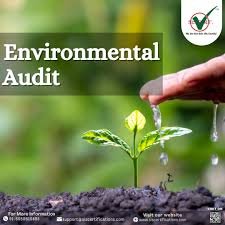COMPLIANT ENVIRONMENTAL AUDITS TAILORED FOR UGANDA: NAVIGATING ENVIRONMENTAL EXCELLENCE.

Environmental Audits involve a structured approach to assess an organization's compliance with environmental laws and regulations, as well as its own environmental policies and practices. Beyond regulatory compliance, audits serve as the compass guiding your organization towards sustainable practices, operational efficiency, and stakeholder trust, in harmony with the guidelines of the National Environmental Management Authority (NEMA).
Unlocking Environmental Audits: A Closer Look
What Are Environmental Audits? Environmental Audits, in the context of NEMA, transcend procedural checklists; they are strategic roadmaps guiding your organization towards a sustainable future. These comprehensive assessments evaluate adherence to environmental laws, regulations, and NEMA's best practices, ensuring your operations align seamlessly with national standards.
Why Consider Environmental Audits?
• NEMA Compliance: Navigate the complex web of regulations, including the National Environment Act, 2019, National Environment (Audit) Regulations of 2020, ensuring adherence and avoiding legal repercussions.
• Risk Mitigation: Unearth potential environmental risks and liabilities in alignment with NEMA's guidelines.
• Operational Brilliance: Enhance efficiency and sustainability to meet and exceed NEMA's standards.
• Trust in Action: Build stakeholder confidence by showcasing your commitment to environmental responsibility, as per NEMA's expectations.
When to Consider an Environmental Audit:
• Annual Environmental Compliance Audits: Typically, environmental compliance audit required by NEMA are undertaken annually, unless otherwise required by the Authority.
• Ongoing Vigilance and Staying ahead of Regulatory Changes: Organizations are encouraged to conduct internal environmental audits to determine whether planned strategies and are properly implemented, maintained and conform to the regulatory requirements. The audit report of this exercise is confidential. It belongs to the company and does not require submission to the Authority or to a lead agency.
• Organizational Shifts: Seamlessly integrate environmental practices during mergers, acquisitions, or organizational changes in line with NEMA's guidelines.
Procedure For Conducting Environmental Audits
This audit procedure should be tailored to the specific context and needs of the organization being audited. It's essential to maintain transparency, objectivity, and a systematic approach throughout the audit process to ensure credibility and effectiveness.
- Pre-Audit Planning
• Objective Setting: Define the scope and objectives of the audit, including compliance checks, system performance evaluation, and identification of improvement areas.
• Regulatory and Policy Review: Review relevant environmental laws, regulations, and company environmental policies to understand compliance requirements.
• Tailored Planning: Craft an audit plan aligned with NEMA's unique requirements. - Data Collection and Review
• Document Review: Collect and review environmental policies, permits, previous audit reports, waste management records, emission data, etc.
• Interview Preparation: Prepare a list of personnel for interviews, including facility managers, environmental officers, and operational staff. - On-Site Audit Activities
• Opening Meeting: Conduct an opening meeting with site management to discuss the audit plan, scope, and schedule.
• Facility Inspection: Tour the facility to observe operations, inspect environmental control measures, and identify potential areas of non-compliance or risk.
• Employee Interviews: Interview selected staff to verify understanding and implementation of environmental policies and practices.
• Data Verification: Cross-check collected information with on-site observations and interviews to ensure accuracy. - Data Analysis
• Compliance Evaluation: Assess compliance with applicable environmental regulations and internal policies.
• Risk Assessment: Identify and assess environmental risks, including potential for accidents or incidents.
• Performance Evaluation: Evaluate the effectiveness of environmental management practices and pollution control measures. - Audit Reporting
• Draft Report Preparation: Prepare a draft audit report outlining findings, areas of non-compliance, risks identified, and recommendations for improvement.
• Review with Audited Entity: Share the draft report with the audited entity for fact-checking and to provide an opportunity for them to respond to findings.
• Final Report: Finalize the audit report, incorporating feedback from the audited entity. The report should include an executive summary, detailed findings, recommendations, and an action plan. - Post-Audit Activities
• Closing Meeting: Conduct a closing meeting to discuss the audit findings and recommended actions with site management.
• Follow-Up Plan: Develop a follow-up plan to monitor the implementation of audit recommendations.
• Record Keeping: Ensure all audit documentation, including reports, interview notes, and data sheets, is securely stored for future reference. - Continuous Improvement
• Feedback Loop: Establish a mechanism for regular feedback on the implementation of recommendations and continuous improvement of environmental practices.
• Periodic Review: Schedule periodic environmental audits to ensure ongoing compliance and improvement.
cool! <3